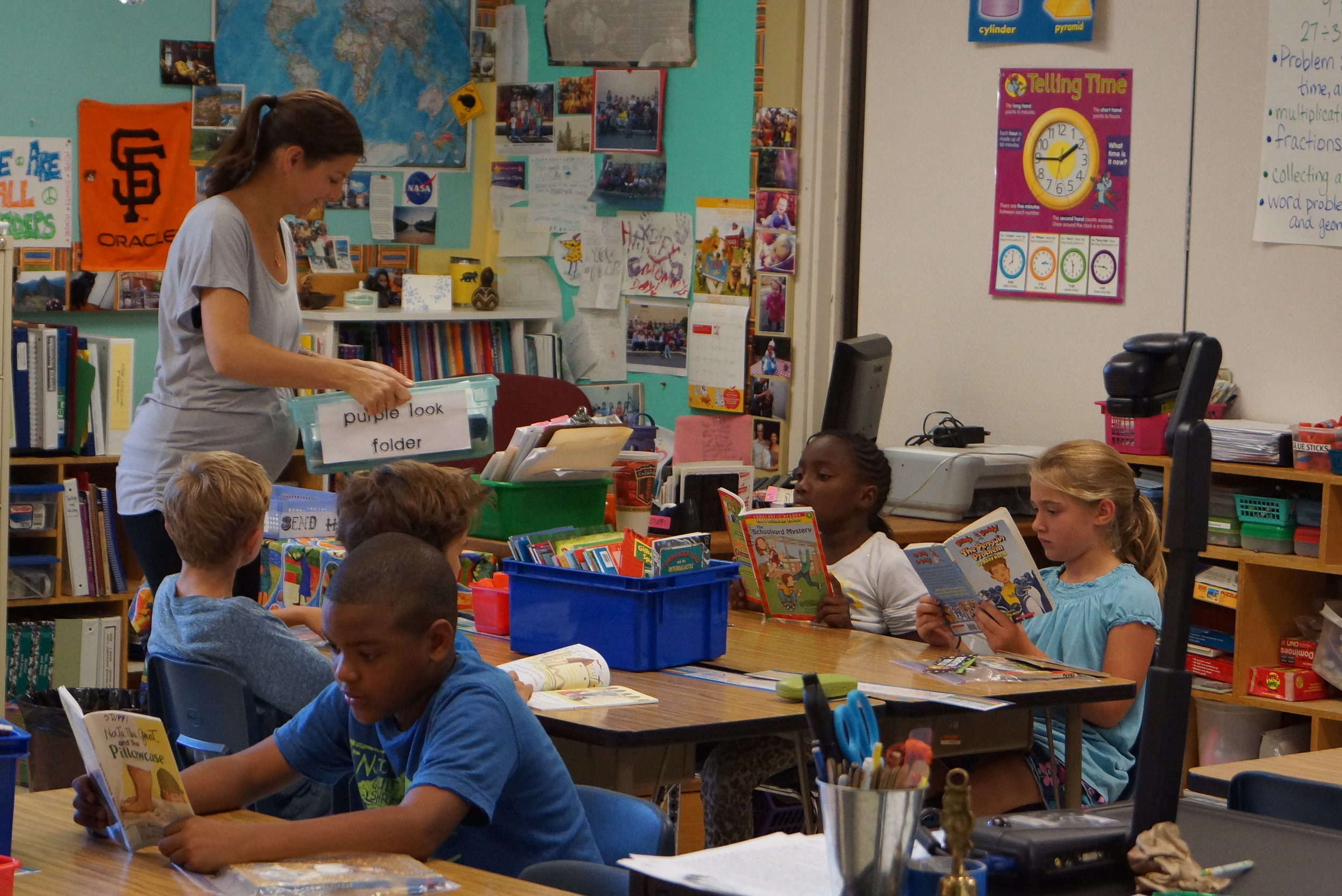Berkeley's 2020 Vision:
Equity in Education
OVERVIEW
2020 Vision is a citywide initiative that strives to eliminate racial disparities in academic achievement in Berkeley’s public schools. Berkeley has one of the nation’s widest achievement gaps between African American and Latino students and their white peers.
The initiative seeks to eliminate these disparities through a shared community commitment to this goal: that all young people in Berkeley grow up with equitable opportunities to achieve high outcomes and realize their full potential. 2020 Vision was formally established in 2008 when the City of Berkeley joined with United in Action, the Berkeley Unified School District and other community stakeholders to call for urgent action to make educational success, equity, and outcomes a community wide priority.
The partners set a goal of high academic achievement for all Berkeley students, while placing a priority on closing the “opportunity gap” for African American and Latino children and youth.
This initiative rests on the belief that the responsibility for ensuring that all children and youth have what they need to fulfill their potential extends beyond school walls to the entire community – to public agencies, community organizations, businesses, families, and more.
To this end, Berkeley’s 2020 Vision’s stakeholders collaborate to carry out more than 50 programs that support this work by increasing access to opportunities that support our young people.
See the full list of programs supported by 2020 Vision
Berkeley’s City Manager’s Office coordinates Berkeley’s 2020 Vision, in partnership with BUSD, Berkeley City College, and the University of California at Berkeley. Public agency, education, nonprofit, and other partners lend content expertise, shape the direction of this initiative, and represent the students and families they serve.
Local funders and institutional partners have aligned their funding to advance the goals of Berkeley’s 2020 Vision. With this support, nonprofits and community agencies design and implement programs and services across Berkeley to “move the needle” on key indicators of student well-being and academic attainment.
Through these collective efforts, Berkeley’s 2020 Vision strives to bridge our community’s opportunity gap by providing equitable learning opportunities for all Berkeley children and youth.
PRIORITIES
Too many young people in Berkeley -- and a disproportionate share of our African American and Latinx children and youth -- lack access to the resources and supports they need to succeed in school.
Berkeley’s 2020 Vision’s partners are striving to close this “opportunity gap” by working together to expand and strengthen our work across six priority areas: Kindergarten Readiness, 3rd Grade Reading Proficiency, 8th Grade Math Proficiency, College and Career Readiness, Improved School Attendance and Health, and Community and Family Engagement.
These priorities span the course of a child’s early education through high school graduation. Each priority is associated with a critical benchmark, demonstrated by research to link closely with a child’s well-being and later academic success.
Also, all of these priorities are inter-related. For example, how well children read in 3rd grade is connected to how prepared they are to start kindergarten and how consistently they attend school. Measurable indicators aligned with each of these priorities capture how well we as a community are doing at fulfilling our commitment to educational equity for Berkeley children and youth.
Kindergarten Readiness closely aligns with future attainment and well-being in school and in life. Starting with prenatal care, early experiences and learning provide children with fundamental skills and foundations for life-long academic and socio-emotional success.
3rd Grade Reading Proficiency is the primary predictor of academic success and high school graduation. Children who learn to read by 3rd grade are more likely to complete high school and less likely to experience socio-emotional and behavioral problems. Reading by 3rd grade opens the doors to a world of learning opportunities as the transition begins from “learning to read” to “reading to learn.”
8th Grade Math Proficiency lays the foundation for succeeding in an increasingly collaborative and technical professional world. Students who master basic math are more likely to be successful in advanced math, which is strongly connected to future college enrollment and graduation.
College and Career Readiness empowers young people to complete high school, equipped to seize positive opportunities to advance in their education and/or career. Higher levels of educational attainment correlate with better health and well-being, and greater economic and career success.
Improved School Attendance and Health are important because children need to be in school to succeed in school. Students who are chronically absent miss out on important learning and can face a steep uphill climb to catch up with their peers. Chronic absences can also be a symptom of other challenges facing children or their families, including health problems (such as asthma), emotional trauma, housing stability, and parental stress.
Community and Family Engagement – Including families, schools, government, nonprofits, businesses, academia, the faith community, and beyond – is perhaps the most critical component of fulfilling our shared commitment to the younger generation. Only through our steadfast engagement can Berkeley’s 2020 Vision ensure that all Berkeley children and youth grow up with equitable opportunities to learn and thrive.






